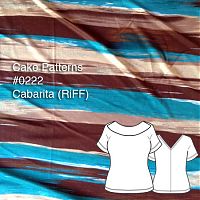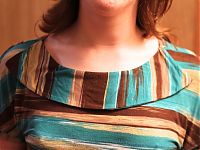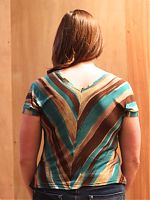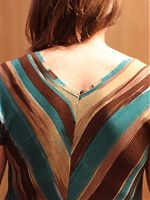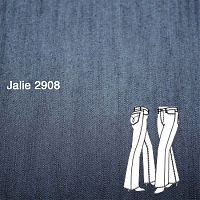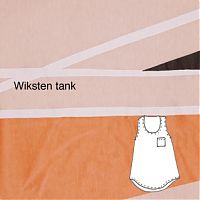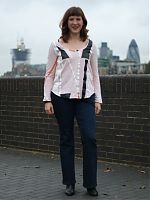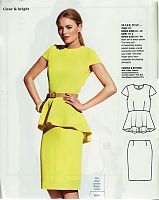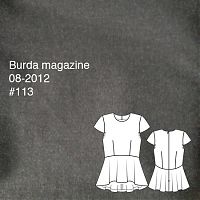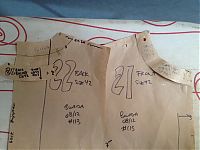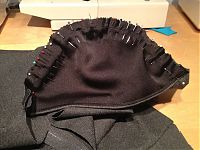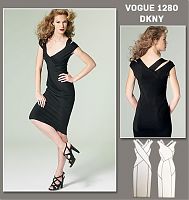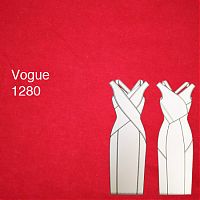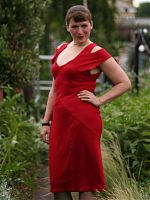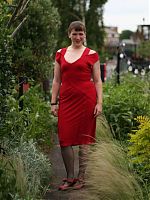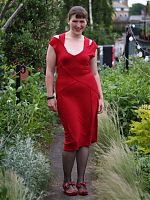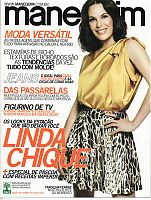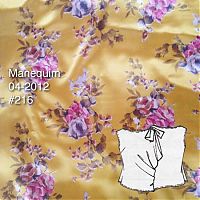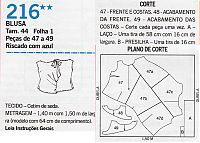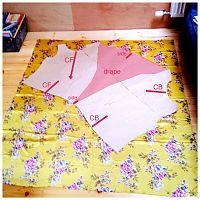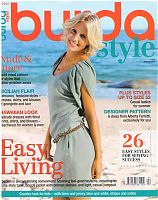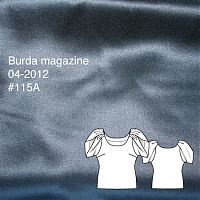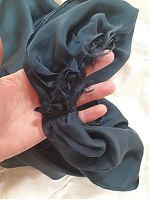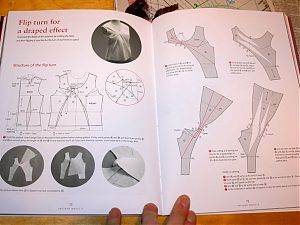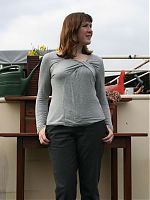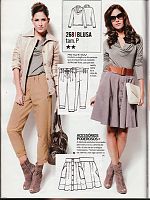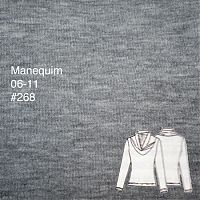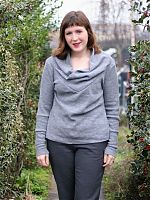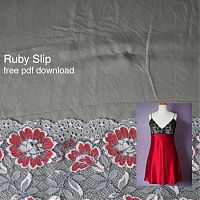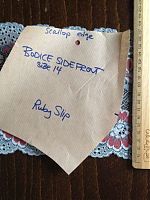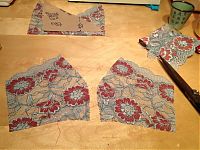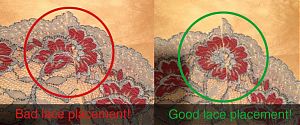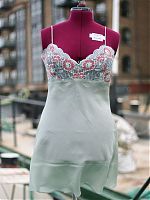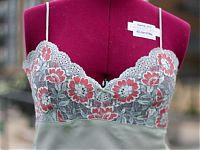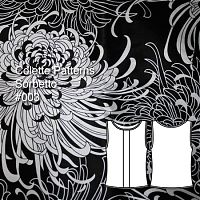Striped Cabarita collared tee
As soon as I saw Cabarita, I knew I had to sew it. It’s got some really unique features I’d not seen in other knit tops – the vintage-inspired collar is the most obvious one, but the back V-neck and choice of short or long dolman sleeves really do make this a cut above the average teeshirt pattern.
Cabarita is the first of the “RiFFs” range from Cake Patterns and is available either printed or as a pdf from Etsy (I opted for pdf!) (Though note that if you ordered the printed version, you need to download the back neck binding piece here as it was accidentally omitted!)
Cake Patterns usually have lengthy and descriptive, very beginner-friendly instructions, but Steph started a side-range of “RiFF” patterns that have the same level of professional drafting, but with brief, text-only instructions and no layout diagrams, intended for more advanced sewists who just want the pattern (hello, that sounds like me!). Crucially, though, they still feature the (now signature) “draw your own side seams” method. When I compared my drawn pattern pieces to my knit sloper, they were scarily close (from the bust down), so this method really does work!
Now, a bit of a confession: I wasn’t entirely sold on the the collar at first. I thought maybe it might look a bit too costume vintagey, and might get in the way or flop around a bit. But I’m glad I included it as I really like it now, and it really does add to this pattern, which might be a bit too plan in front otherwise.
When I sew this top again, though, I’ll a) use lightweight knit interfacing on the collar so it stays in place a bit better (rather than the edges folding over, like you can see below right) and b) attach it so that the seam is on the right side and therefore hidden under the collar as it hangs, negating the need for any understitching on a narrow serged seam allowance.
This fabric is a lovely and soft viscose jersey in brown and turquoise from Minerva (and also comes in brown/pink and brown/orange colourways). Minerva don’t do half metres so I took the plunge and only ordered 1m, and I’m happy to report that I could easily fit the shorter-sleeved version into it.

